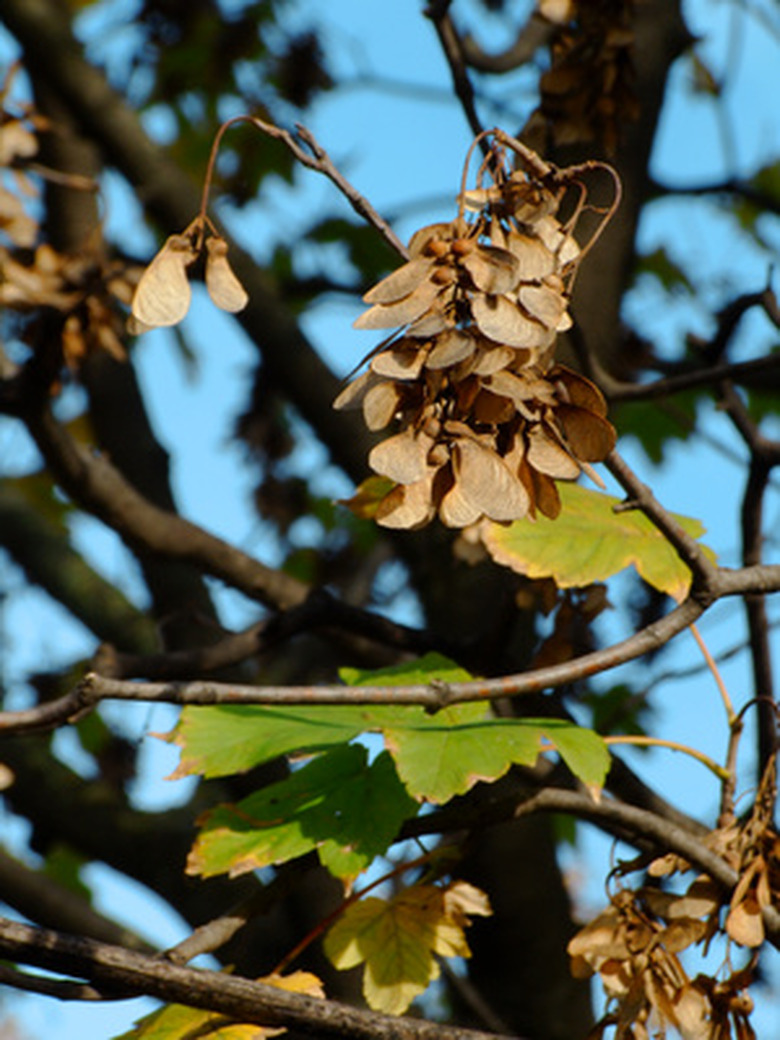How To Trim Maple Trees
Pruning trees is not challenging once you know what type of growth to remove. Maple trees benefit from annual pruning for shaping, air circulation and tree health. While most trees can be pruned in late winter once frost danger passes, maples tend to bleed if pruned at this time. Wait until the maple trees put out leaves late in spring to prune so they do not bleed.
Step 1
Find dead, diseased and damaged branches on your maple tree; these need to be removed for the health of the tree. Dead wood feels hollow to the touch and doesn't move in the wind. Diseased and damaged wood appears scarred, wounded, deformed or discolored.
- Pruning trees is not challenging once you know what type of growth to remove.
- While most trees can be pruned in late winter once frost danger passes, maples tend to bleed if pruned at this time.
Step 2
Cut off dead and unhealthy wood at its base. Use anvil pruners for small branches and lopping shears for growth larger than 3/4 inch in diameter. Sanitize your pruning tools by spraying them with a disinfectant between each cut. This prevents you from spreading disease to healthy parts of the tree.
Step 3
Remove branches that crisscross other branches, since their constant rubbing will cause damage. Also cut off branches that slope downward or grow vertically upward.
Step 4
Prune off up to 1/3 of the old growth on your maple tree by cutting it off at the base. This opens up the canopy to light and air and promotes new growth.
- Cut off dead and unhealthy wood at its base.
- Sanitize your pruning tools by spraying them with a disinfectant between each cut.
Step 5
Head back long limbs using anvil pruners. Clip them back to the desired length, cutting back to a lateral branch or to a node.
Step 6
Trim off suckers that grow from the tree trunk, from crotch intersections and from the sites of old pruning cuts. Suckers have excess foliage and grow rapidly but produce poor growth.
Trim The Top Of A Maple Tree
Prune your maple in the late fall while it is dormant. Use hand pruners for branches with diameters of under 1 inch, lopping shears for diameters up to 2 3/4 inches, and pruning saws for those that are larger. For branches out of reach, use a pole pruner. Make each cut just above a lateral branch that is at least 1/3 the diameter of the cut stem. Select lateral branches with strong, U-shaped angles of attachment to the tree rather than narrow angles of connection. If more pruning is required, save it until the following year.
- Head back long limbs using anvil pruners.
- For branches out of reach, use a pole pruner.
Things Needed
- Anvil pruners
- Lopping shears
- Disinfectant spray
- Handsaw
Tip
Use a handsaw to prune large limbs that can't be cut with a handsaw.
References
- University of Missouri: Pruning and Care of Shade Trees
- U.S. Department of Agriculture Forest Service: How to Prune Trees
- University of California Cooperative Extension Center for Landscape and Urban Horticulture: Pruning Trees
- University of California Cooperative Extension, Master Gardener Tulare and Kings Counties: Pruning Deciduous Landscape Trees – Let's Do it Right
